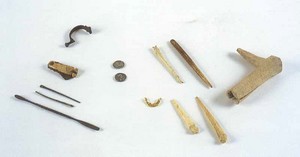
Written testimonies
The Vacceans in history
The written testimonies about the Vaccean people are closely linked to the Roman conquer. The Romans, also with the change of archaeological data, have given us proof of a rising new era in the history of the the River Duero's Valley.
Although it is not our goal to explain here all the milestones in the process, we'll talk about the Luculo's documents, 151 B.C., who by means of tricks and a pragmatic cruelty, executed the people of Cauca and then advanced to Intercatia (the honours here were taken by Escipion who beat its singular king) and Pallantia.
Lepido and Bruto, during years 137-6 B.C., fought in Pallantia, not only losing the battle but also suffering numerous killed soldiers and having to flee. Not even the Escipion's attacks over the Vaccean fields in 134 B.C. achieved to conquer Pintia, while seeking to intercept and stop the cereal supplies to the people of Numantia. Only the Southern territory was controlled by the Roman Empire after Didio's campaign in 97 B.C.
The Vacceans weren't incorporated to the Roman domain in spite of various episodes of war between Sertorio and Pompeyo (74 B.C.) nor the riots repressed by Metelo (56 B.C). Only the campaign of Estatilio Tauro during 29 B.C. through the Duero and Pisuerga rivers' valleys marks down the beginning of the Roman rule. Two years later, Intercatia surrendered to Apuleyo and in 25 B.C. Lancia was taken by Carisio along with the Asturians.

Metals and bone elements from Roman period
from several homes from the early 1st century A.D.
of Las Quintanas





